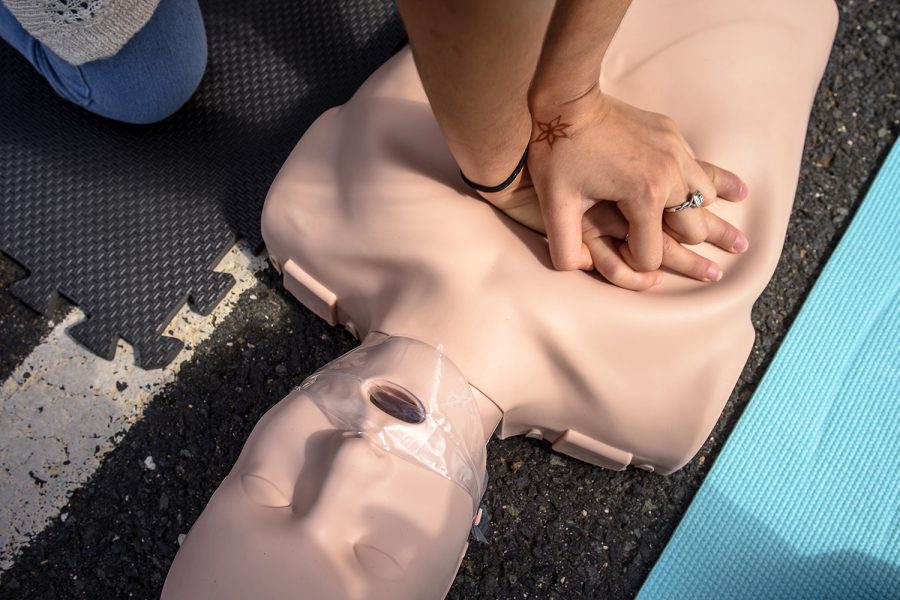Opinion: Everyone should learn basic lifesaving skills
Medical professionals should not be the only ones to have CPR and first-aid training.
The hands of a student compress the chest of a CPR mannequin during a community training session on July 27, 2018, at the University of St. Joseph in West Hartford, Conn. (Mark Mirko/Hartford Courant/TNS)
February 25, 2020
My 12-year-old sister had to call 911 when my dad fell and broke six ribs and punctured a lung. While he was momentarily incapacitated, she knew to call 911 and tell them our address and what had happened. Before the ambulance arrived, she applied basic first aid.
Her prior training about medical emergencies and basic steps of first aid taught her to remain calm during a crisis. Her actions saved my father’s life that day.
While it’s unpleasant to think about, an emergency situation can happen at any time.
My parents both hold jobs in the medical field, and I renew my CPR and first-aid certifications every two years. These two qualities make me a popular resource for helping others with their medical problems. While I do have a lifeguarding job — which requires these certifications — learning rudimentary first aid in any job can assist everyone in any situation.
I lived in a residence hall my freshman year. The majority of my floormates were striving for an English and creative-writing major, but there were also pre-med students. Even so, when someone was sick or had a cut, they would seek out my advice and aid rather than the students learning about the human body and medicine.
From simple injuries such as cuts and headaches to the complex healing process of surgery scars; I have done it all, without having a degree or even seeking a degree involving the medical field. Post appendix surgery, my friend came to me to check up on how his scar was healing and through my observations, we learned he was close to developing an infection and needed a professional.
An American Red Cross report found that 5 million people were taught lifesaving skills in 2018, many of whom did not go into a practice that requires these skills. While those who learn the skills typically seek out a job or a lifestyle involving first aid, learning what to expect with the process of an injury can relieve the fear of uncertainty before professionals step in.
Learning CPR and first aid provides a small safety net in all settings, not just near pools or hospitals. According to the American Heart Association, 75 to 80 percent of out-of-hospital cardiac arrests happen at home. If there is no help from the moment of collapse to the time paramedics arrive, the chance of survival is close to zero.
Nonprofit companies have also taken advantage of more regular people learning CPR and first aid. An app called Pulse Point can alert users if a 911 call for cardiac arrest has been placed nearby and they are closer than an ambulance team.
While I personally have not received a call on my phone yet, I have the app downloaded in case someone needs help and I’m closest to them. I also carry a portable face mask on my lanyard, it fits in the palm of my hand for easy transport. My lifeguarding job provided them to all guards who received their renewal.
CPR and first-aid classes are taught by the Red Cross year-round. A search on their website can help you find a class nearby and figure prices for learning at a multiple-day seminar. While it may not appear as efficient as learning over months at a time, the basics are taught and drilled into students’ heads.
In the end, everyone benefits from learning CPR and first aid.
Columns reflect the opinions of the authors and are not necessarily those of the Editorial Board, The Daily Iowan, or other organizations in which the author may be involved.





